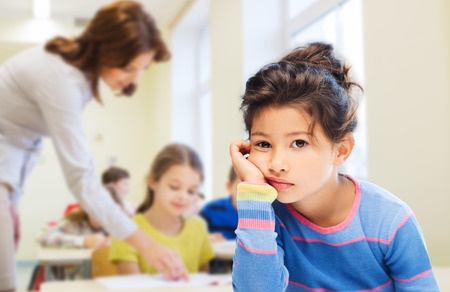Coronavirus public K-12 school safety lockdowns and reopening uncertainties have driven millions of American families to think very seriously about home-schooling, private schooling and charter school alternatives that are facing opposition from powerful teacher union lobbies and compliant Democratic advocates.
Many, perhaps millions, of other current home-schooling and alternative program families are realizing that in many cases they, or their hired teachers, are doing a better job of educating their children than they experience with accessible public offerings.
Some families with school-age children are wondering if or when their kids will be able to get any sort of “normal” education experiences. Uncertainty about public and private school re-openings has affected more than 13,000 school districts nationwide, with some already pushing back start dates, planning hybrid online- brief physical presence models, or entirely online classes.
There are nearly 60 million prekindergarten, elementary, middle and high school students in the U.S. For most of them, especially the younger children, virtual online instruction is very a poor substitute for “really” being with classmates and teachers who are totally present for them.
Most immediately, school closings are creating a child care crisis that will make it difficult or even impossible for many parents to hold on to jobs in an already pandemic-ravaged labor economy. In addition, many parents of children enrolled in hybrid teaching models will have multiple children on different face-to-face attendance schedules that won’t enable them to manage work arrangements around supervising at home or transporting them to classes.
Many parents aren’t able to work from home; others lack computing or home-schooling skills.
On July 17, California Gov. Gavin Newsom decreed that neither government-run nor private schools may open in counties having rising COVID-19 caseloads and hospitalizations. Ignoring the previous “flatten the curve” lockdown rationale which has already occurred, with current dropping caseloads, 80% of California residents live in counties that won’t be allowed to open.
It’s entirely safe to imagine that public school-invested teachers unions won’t shed any tears if the pandemic puts competitive private tuition-dependent options out of business. Public schools are dominant precisely because they don’t need to compete for funds. Taxpayers are forced to finance them whether or not teachers show up, with no rebates if they don’t.
On July 28, the American Federation of Teachers, the second-largest education union, threatened “safety strikes” if reopening plans aren’t entirely to its liking. Those conditions typically demand shortened hybrid daily teaching schedules. Unions will lose competitive advantages as more efficient private schools afford superior-performance results teaching in person five days a week.
Many who don’t homeschool will push for an expansion of charter schools which tend to be responsive to parents and can more easily fire poor teachers. Taxpayers also gain an advantage since charter schools costs, on average, are thousands of dollars less than traditional public schools.
To be very clear, there are many excellent public schools, perhaps the great majority are, with enormously dedicated, caring and competent teachers. Families with adequate financial means typically make it a priority to choose neighborhoods to raise children near them.
Sending a child to a relatively inexpensive private school that charges $8,000 in annual tuition only makes economic sense if the family values the private option by at least that amount. And that’s a high hurdle for most parents.
Countless other parents lack that opportunity altogether, with low-income minority inner-city residents also disproportionately getting the brunt of the lowest-performing schools. These most disadvantaged neighborhoods are encountering aggressive teacher union and allied Democrat push-backs blocking availability of much higher quality charter school options with limitations placed on how many can open and where they can be located.
Dr. Thomas Sowell’s new book “Charter Schools and Their Enemies” published last June on his 90th birthday points out that certain charter schools have had great achievement records in educating low-income minorities.
One of these, an all-Black Dunbar High School in Washington, D.C. in the early 1970s, had outperformed its local white counterparts and repeatedly exceeded national norms on standardized tests throughout the first half of the 20th century. Over an 85-year span, from 1870 to 1955, most of Dunbar’s graduates went to college, even though most Americans – white or Black – did not.
Dr. Sowell’s point isn’t that there are no subpar charter schools – there are – but rather that school choice is a boon for groups that have long been poorly served by the public system. The Success Academy charter schools in New York City, for example, have effectively closed the academic achievement gap between black and white students.
It’s also clear, Sowell emphasizes, that charter schools represent a threat to the current power balance that allows the vested interests of adults who run public education to trump what’s best for students. He reminds us that “schools exist for the education of children. Schools do not exist to provide iron-clad jobs for teachers, billions of dollars in union dues for educational bureaucracies, a guaranteed market for teachers college degrees, or a captive audience for indoctrinators.”
Democratic presidential candidate Joe Biden is being pressured by progressives, if elected, to continue to limit charter growth. The road map laid out by his Biden-Sanders Unity Task Force proposes both to reinforce the public school status quo and to suppress its competition from charter and other private schools.
Quite the opposite, President Trump strongly supports federal government reimbursable school choice options for all students, most particularly prioritized for low-income residents in poorly-performing public school districts.
In November, the public will not only choose which school course to charter, but also if a ship of educational opportunity will ever leave port carrying vital lifeboats for those in greatest peril of drowning.
This article originally appeared at NewsMax
